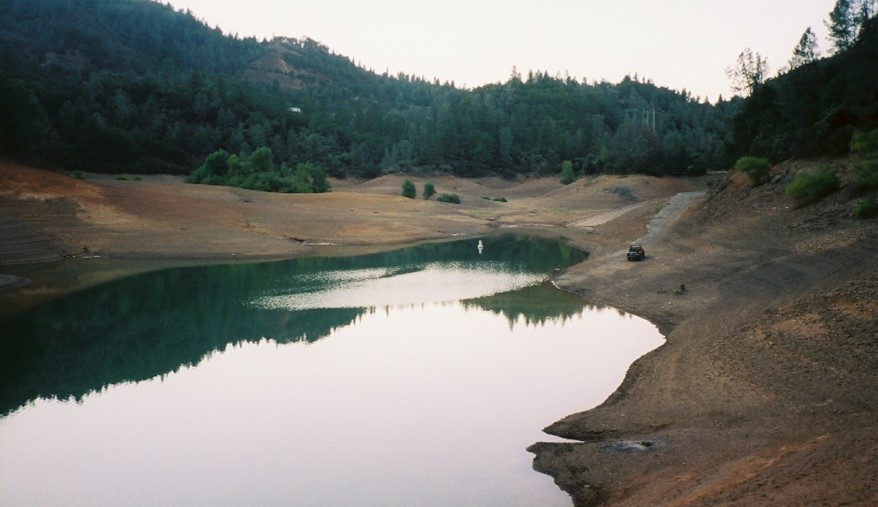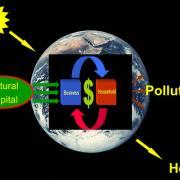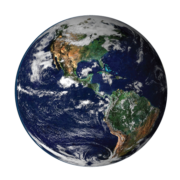Biden-Harris Water Security Plan Springs a Leak
by Taylor Lange
The American Southwest is a bit parched at the moment. The region is in the midst of its 23rd consecutive year of drought, its longest and most extensive since 800 CE. The drought is so bad that California’s two largest reservoirs—Shasta Lake and Lake Oroville—reached critically low levels in March, when they should have been at their highest.

A depleted Shasta Lake in California.
The southwestern USA (and Mexico) is not the only place facing water shortages. The United Nations Convention to Combat Desertification released its Drought in Numbers 2022 report on May 11th, and the findings are grim. From 2000 to 2019, droughts impacted over 1.4 billion people worldwide, making them the second most pervasive disaster after flooding. Severe droughts impact Africa the most, as 44 percent of all drought events have occurred on the continent in the past 100 years. In Australia, the 2019-2020 megadrought fueled the megafires that killed 26 people, damaged 3,000 homes, and caused the most substantial loss of habitats for the continent’s threatened and endangered species since colonization.
As global heating ensues, droughts will become more common, more intense, and longer lasting. This will result in more people with limited access to safe water for drinking and sanitation. Water insecurity is a volatile issue that has played a role in many conflicts at the international and subnational level. For example, alleviating water insecurity in Crimea is likely a reason for ongoing Russian aggression in Ukraine, and water has played a key role in strained relations between India and Pakistan. In the USA, rights to the Apalachicola-Chatthoochee-Flint water basin have strained relations among Georgia, Alabama, and Florida, with litigation reaching the Supreme Court multiple times.
The Biden-Harris Administration recently acknowledged the role that water security will play in future global and domestic conflicts and developed the “White House Action Plan on Global Water Security” in response. The plan summarizes the potential for conflict in transboundary water governance, particularly in arid regions, and outlines of how international cooperation can address the issue. However, the Administration’s focus on creating water security to fuel economic growth is glaring in its unsustainability.
Biden-Harris in Brief
The White House action plan is congruent with the UN’s 6th Sustainable Development Goal, which is to provide access to water, sanitation, and hygiene (WASH) to the world’s population. The plan rests on three pillars:
- “Advancing U.S. leadership in the global effort to achieve universal and equitable access to sustainable, climate-resilient, safe, and effectively managed WASH services without increasing greenhouse gas emissions.”
- “Promoting sustainable management and protection of water resources and associated ecosystems to support economic growth, build resilience, mitigate the risk of instability or conflict, and increase cooperation.”
- “Ensuring that multilateral action mobilizes cooperation and promotes water security.”
Overall, these pillars are hard to argue against. The focus on resiliency will be crucial as climate change progressively threatens water supplies, and building international institutions that support cooperation should lessen the threat of conflict and encourage equitable access to water. Even the language surrounding economic growth is mostly applicable to the Global South, where growth remains a necessary goal.
These strengths aside, the plan fails to acknowledge limits to growth, much less limits as a source of conflict. It also lacks reference to the contributions of large multinational corporations in causing water insecurity, particularly in Global South countries. Neglecting limits to growth and corporate responsibility demonstrates a misunderstanding of water’s role in the human economy, national security, and international stability. It also demonstrates a flawed understanding of how water supplies collapse.
Quantity and Function of Water in the Human Economy
Aside from being consumed for sustenance, water is critical to all economic sectors, starting with agriculture and extraction. Humanity uses over 60 percent of the fresh water supply not locked in glaciers. The Water Footprint Network (WFN), a think tank and advocacy group devoted to monitoring water, categorizes water use as follows:
- Blue water – water stored in the ground (aquifers), or at the surface (lakes, rivers, etc.), that is put into a product or returned to that source unpolluted.
- Grey water – water used to absorb and dilute pollutants, such as wastewater from a sewage plant or agricultural runoff contaminated with fertilizer and pesticides.
- Green water – precipitation that is stored in the root zone of plants that is either used by them or evaporated. Only natural precipitation is calculated, not irrigation.
Water plays a vital role in resource extraction, particularly that of oil and gas via hydraulic fracturing. “Fracking” entails injecting water and additives into oil and gas wells to crack rock formations, and it has proliferated. Beyond the oil and gas sectors, water absorbs pollution from mineral and coal mines, contaminating ecosystems downstream.
Agriculture uses the most of all three kinds of water. Crops and livestock require water to grow, so considerable quantities are diverted from rivers and streams or pumped from aquifers for agricultural use. Though some of the water comes from green-water precipitation, irrigation constitutes the largest draw of blue water across the globe. To top it all off, copious water is contaminated with fertilizer and pesticides, increasing the grey water footprint.
Water Use and GDP
Water’s integration with the economy is indicated by its relationship with GDP. Global water use has continually increased since 1997 according to the AQUASTAT database of the United Nations Food and Agriculture Organization (UNFAO). The UNFAO conducts quintennial surveys of national water monitoring agencies, and most countries have been reporting since 1997. GDP has been rising since 1997 as well.
Global water use (dashed line) and GDP (solid line), 1997–2017.
AQUASTAT includes only five full years of data; too few to calculate meaningful statistics. However, the WFN’s data on country-level water footprint from 1996–2005 can be used to test the relationship instead. Looking at the water footprint map, we see that the countries with the largest economies and populations use the most water; see for example the USA, China, and India.
Average water footprint, 1996–2005.
A scatterplot comparing the average footprints and average GDPs of countries from 1996–2005 also suggests that countries with bigger economies have bigger water footprints. GDP and water footprint are highly correlated (r = 0.661).
Average water footprint and average GDP of 209 countries, 1996–2005. (Both axes are scaled using a log10 transformation.)
Correlation doesn’t prove causation, and a bona fide causal analysis would account for other factors that influence GDP and water use. However, the evidence of water’s integration into the human economy is abundant, and that alone lays a solid foundation for a bi-directional causal story: GDP growth requires more water, and policies aimed at GDP growth will cause increased water consumption. This cycle exemplifies a positive feedback loop, which inevitably leads to collapse without proper intervention.
Water Is Renewable-ish
“Wait a minute Taylor,” I hear you thinking, “isn’t water a renewable resource? Doesn’t the water cycle continuously regenerate our water supply?” In a manner of speaking, yes, but not all water is consumed from sources that regenerate at the rate of use, and global heating will undermine the reliability of water renewal in many places.
Aquifers provide drinking water for almost half the U.S. population and roughly 2 billion people worldwide, especially in arid regions. While these underground reservoirs recharge, they do so at a much slower rate than above-ground reservoirs. To make matters worse, most withdrawal from aquifers far exceeds the recharge rate, leading to their depletion across the globe. As these aquifers are depleted (as they inevitably will be with unfettered growth), they will no longer fulfill the drinking, irrigation, and sanitation needs of populations and their economies; certainly not at current levels.
Droughts also impact the renewability of water, as decreased rainfall causes lakes, rivers and reservoirs to deplete faster. This puts even more pressure on aquifers, because populations dependent on above-ground sources will have to switch to groundwater supplies. Finally, droughts further decrease the recharge rate of aquifers, hastening their depletion.
It’s definitely time for water security action plans, but they need to acknowledge limits to growth. Though the Biden-Harris plan has potential, it is undermined by the goal to “support economic growth.” As the Administration rolls out more plans and policies, I hope to see a more regional approach to resilience, anchored with a steady-state perspective. If not, it just won’t hold water.
 Taylor Lange is CASSE’s ecological economist.
Taylor Lange is CASSE’s ecological economist.







 CC BY 2.0
CC BY 2.0
Superb article. I have visceral experience with drought & water shortage, right now here in France, where entire rivers are drying up, and when living in Bolivia when our main water source (from a glaciar that disappeared) dried up. In our apartment we had running for 1/2 hour per day during 2 months. I’m thinking of all the water that goes into the cornfields growing inedible corn for ethanol fuel and animal feed (that’s 99% of the corn grown in Iowa). As a starter we need to degrow meat consumption and car use. Political policy makers are not going to see the need to degrow, so we have to do it ourselves, massively.
Correction of typo in my post … “running” should have read “running water”
The cognitive dissonance around water in the American West has been just bizarre to witness, for decades now. Everyone is “very concerned” and so on, but as Taylor notes, there is always the ritualistic nod to economic growth as a goal.
I could go on for days about the bizarre state of water policy in California, but l’d best not.
I am thinking these days that the best way to get new thinking started is actually not to start the conversation with economic growth. Rather, I’m leaning more toward getting people to nod in agreement about one specific “small” thing, i.e., that we should plan around *water* being a finite resource, and we can’t have more. Over time, I am hoping, acceptance of one limit may lead to a broader insight about the economy. Anyway, that’s the approach I’m trying to take in dealing with people – wish me luck.